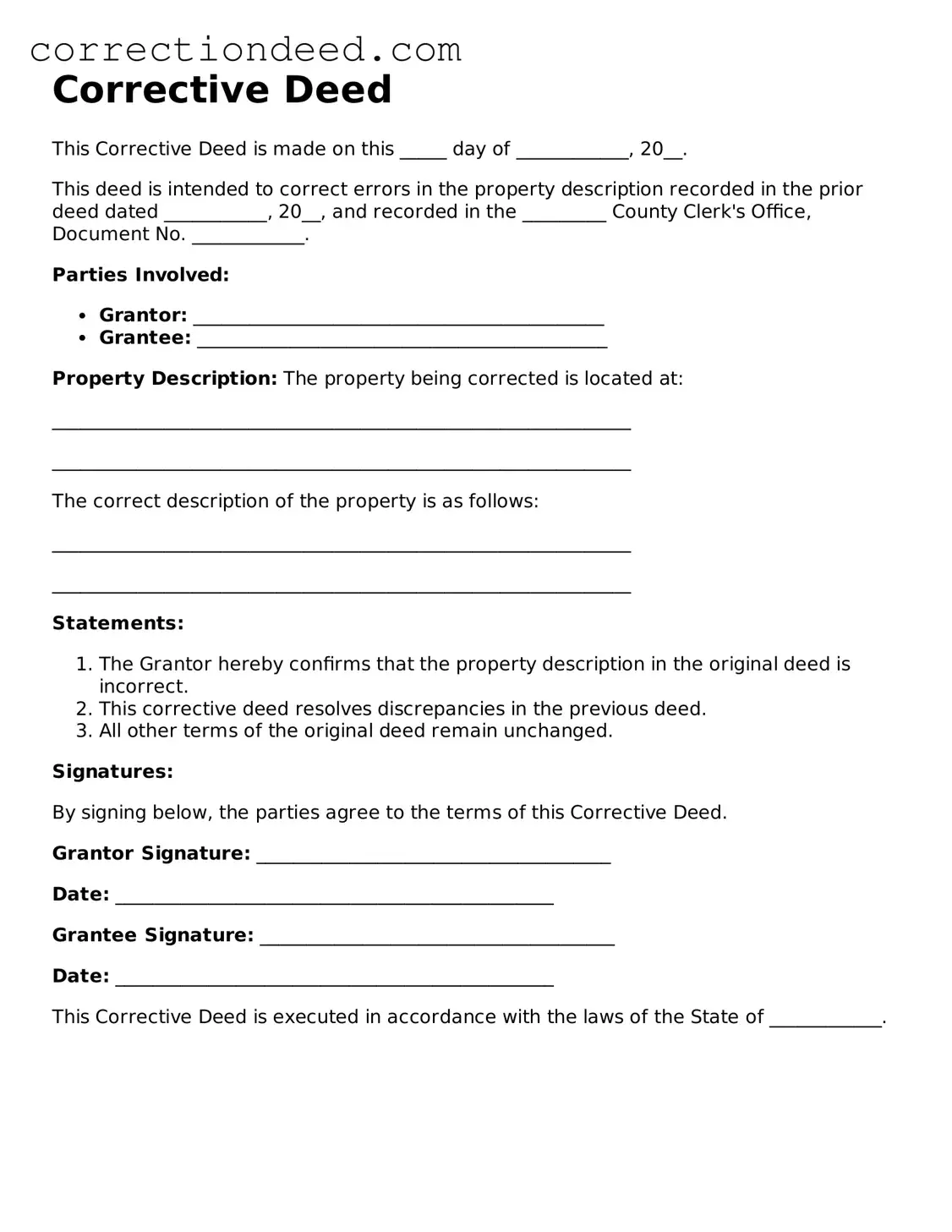Common mistakes
Filling out a Corrective Deed form can be a straightforward process, but many people make common mistakes that can lead to delays or complications. One frequent error is not including all required information. Each section of the form must be completed accurately. Omitting details can result in the form being rejected or returned for corrections.
Another mistake involves incorrect names. It’s essential to ensure that all names are spelled correctly and match the names on the original deed. Any discrepancies can cause confusion and may require additional steps to resolve. Additionally, using nicknames or abbreviations instead of full legal names can create issues.
People often overlook the importance of signatures. Each party involved must sign the Corrective Deed. Failing to obtain all necessary signatures can render the document invalid. Furthermore, forgetting to have the signatures notarized is another common oversight. Notarization is typically required for the deed to be legally recognized.
Incorrect dates are also a significant issue. The date of execution must be accurate and correspond with the events being corrected. If the date is wrong, it can lead to misunderstandings about the timeline of ownership or the validity of the deed.
Another mistake occurs when individuals do not provide a clear description of the property. The Corrective Deed should include a precise legal description. Vague language or incomplete descriptions can create ambiguity and complicate future transactions.
Some people fail to check for consistency with previous documents. The information on the Corrective Deed must align with the original deed and any other relevant documents. Inconsistencies can lead to disputes or legal challenges down the line.
Additionally, individuals sometimes neglect to review the entire form before submission. Skimming through the document may lead to overlooked errors. A thorough review can catch mistakes that could otherwise delay the process.
Lastly, not understanding the implications of the corrections can lead to further complications. It’s crucial to fully comprehend what changes are being made and how they affect ownership or rights. Seeking guidance can help clarify these points and ensure the Corrective Deed is filled out correctly.
